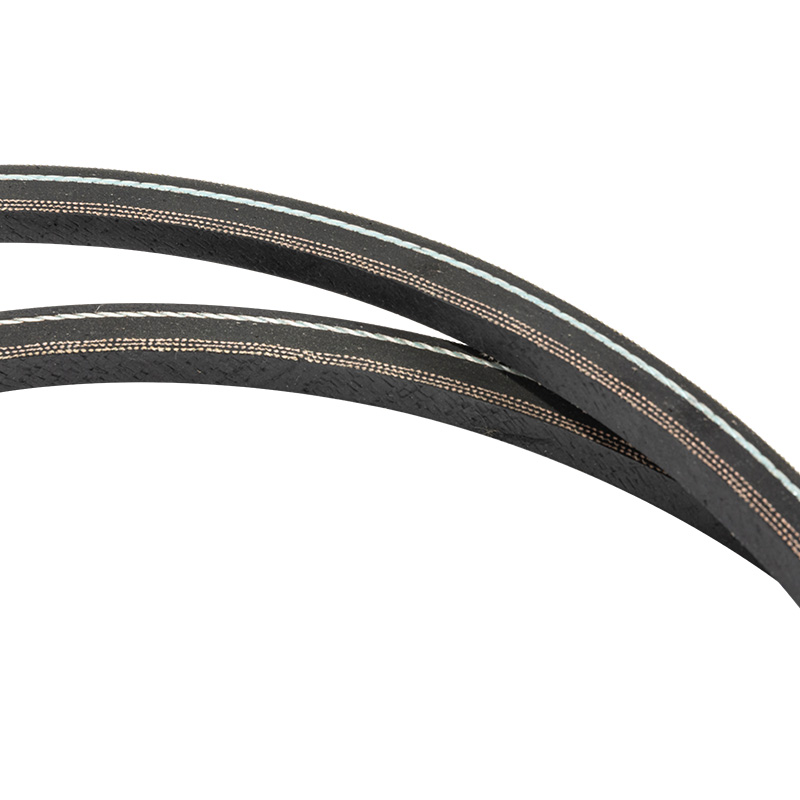Exposure to chemicals and oils can significantly impact the performance and lifespan of CR rubber automotive V-belts. Here are some specific considerations:
Chemical Resistance: While CR rubber is acknowledged for its commendable chemical resistance, it's imperative to delve into the nuanced dynamics of specific chemical interactions. Certain corrosive agents, such as solvents and potent acids, can catalyze intricate molecular transformations, potentially undermining the cohesive structure of CR rubber and introducing vulnerabilities that compromise its mechanical prowess.
Oil Resistance: The resilience of CR rubber to a diverse spectrum of oils is contingent upon an intricate dance between its molecular constitution and the heterogeneity of encountered oils. Additives within oils, extremities of temperature, and the distinctive composition of various lubricants can orchestrate a symphony of reactions within the rubber matrix, potentially ushering in alterations in volume, hardness, and other critical mechanical attributes.
Temperature Effects: Beyond isolated stressors, the confluence of chemical exposure and temperature extremities orchestrates a complex ballet of degradation. Elevated temperatures act as a relentless conductor, hastening not only the chemical decay of CR rubber but also instigating accelerated thermal aging. This orchestration amplifies the wear and tear, manifesting in a symphony of challenges for the V-belt's longevity.
Seal Integrity: Acknowledging the dual persona of V-belts as both mechanical workhorses and custodians of seal integrity unveils a profound challenge. The erosive influence of chemical exposure on CR rubber's elastomeric prowess jeopardizes its role as a steadfast sealant. The consequence? A vulnerability to leaks that not only compromise performance but also pose a threat to the integrity of neighboring components.
Cracking and Hardening: Delving deeper into the susceptibility of CR rubber to the intricate dance of cracking and hardening, one unravels a narrative of chemical orchestration. The chemical tableau catalyzes polymer chain disruptions, initiating a poignant narrative of ozone-induced cracks and an augmented symphony of hardness changes. The result? A V-belt whose flexibility wanes, succumbing to a crescendo of potential failure.
Material Compatibility: Achieving the zenith of material compatibility mandates an alchemical precision in CR rubber formulation. A meticulous fusion of rubber additives, antioxidants, and processing aids becomes an artisanal pursuit. This bespoke concoction is crafted to navigate the labyrinth of chemical and oil environments, creating a resilient tapestry that weaves stability and resistance to the relentless ravages of degradation.
Contaminant Ingress: Beyond the external skirmishes with chemicals and oils, the internal sanctity of CR rubber becomes a battleground against insidious infiltrators. The potential for contaminants to breach the inner sanctum poses a formidable threat. This clandestine intrusion sets the stage for a domino effect of degradation mechanisms, ushering in an accelerated wear and a silent but potent compromise to the V-belt's operational fidelity.
Addressing these considerations requires a comprehensive understanding of the specific operating conditions, meticulous material selection, and rigorous testing protocols during the design and manufacturing stages. Additionally, ongoing maintenance practices and periodic inspections are essential to monitor and mitigate the effects of chemical and oil exposure on CR rubber automotive V-belts throughout their operational life.
Automotive Raw Edge V-Belts


 View More >>
View More >>
 View More >>
View More >>
 View More >>
View More >>
 View More >>
View More >>
 View More >>
View More >>
 View More >>
View More >>
 View More >>
View More >>
 View More >>
View More >>
 View More >>
View More >>
 View More >>
View More >>
 View More >>
View More >>
 View More >>
View More >>